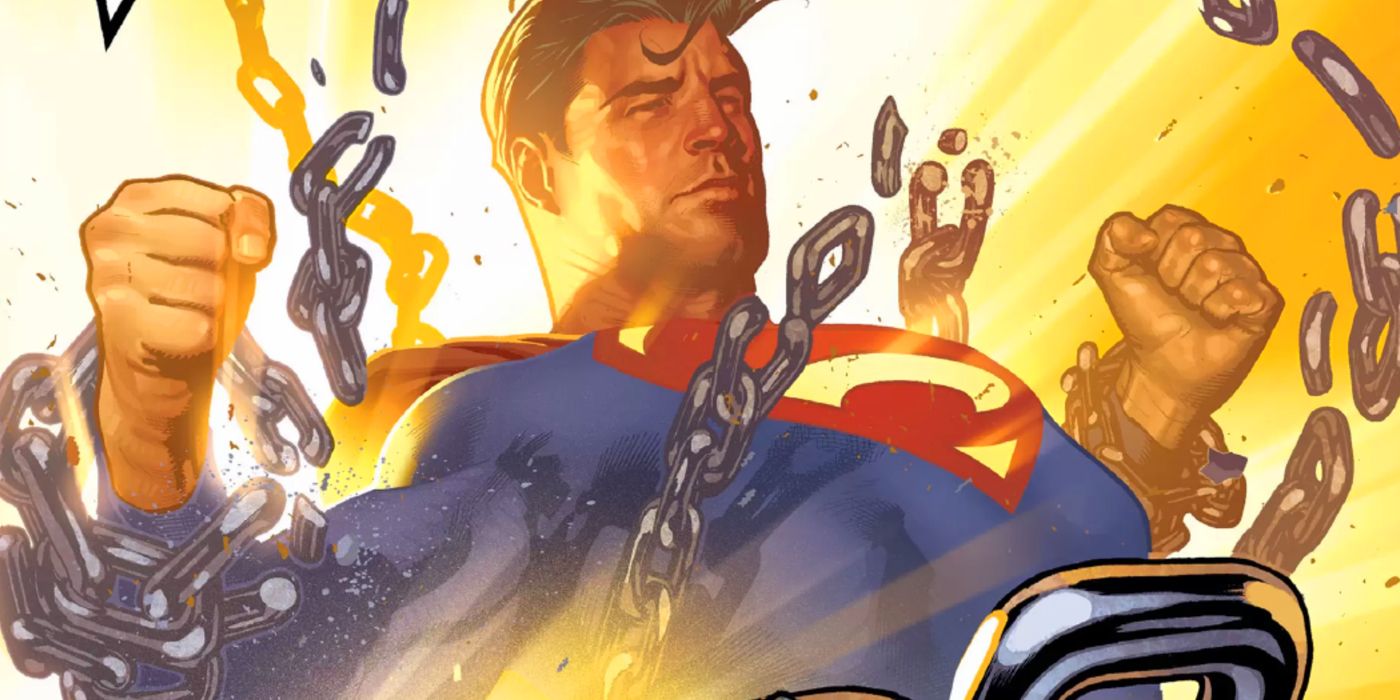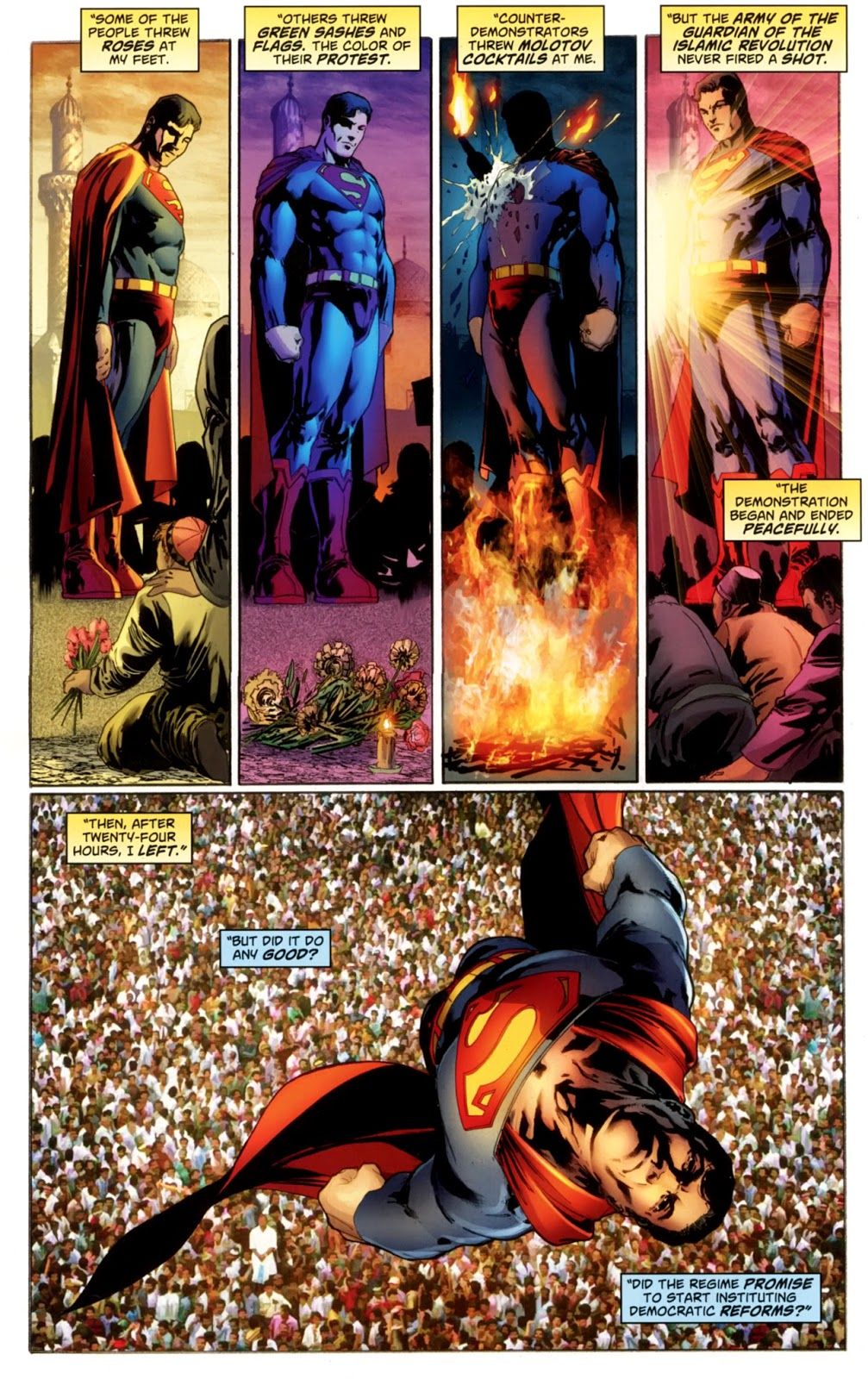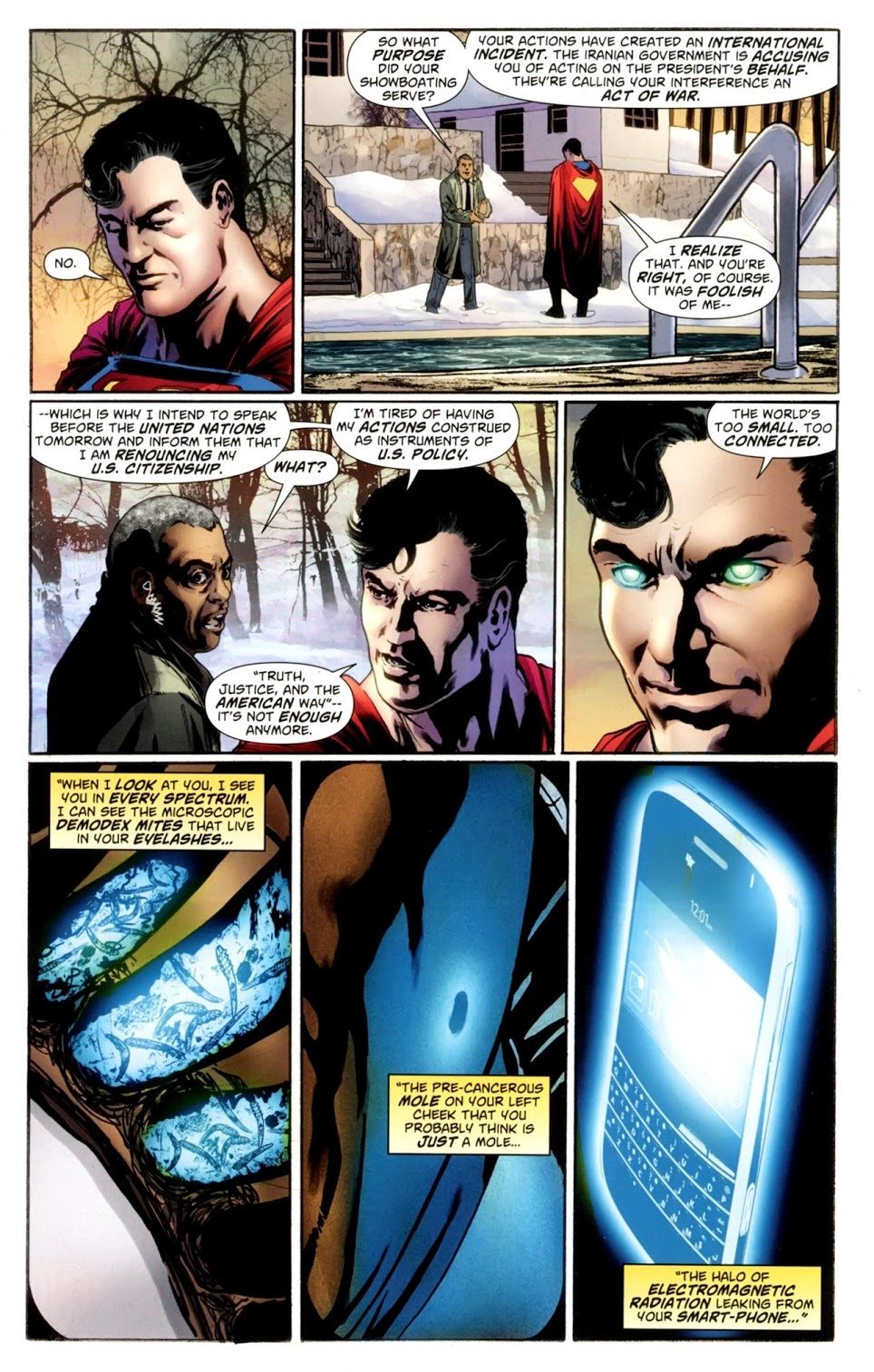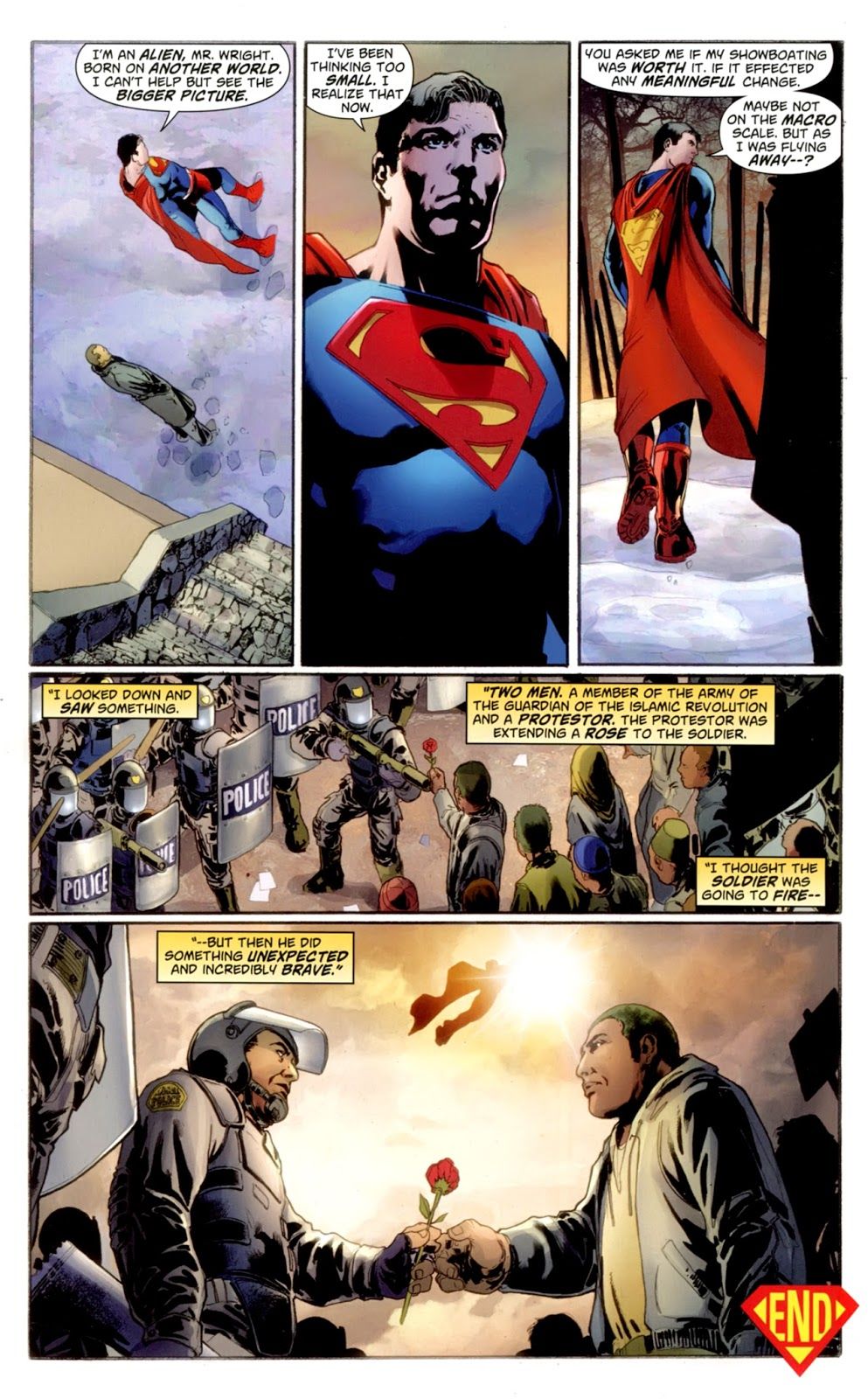Today, we look back to April 2011 at the time that Superman renounced his United States citizenship in Action Comics #900.
This is "Look Back," a feature that I plan to do for at least all of 2020 and possibly beyond that (and possibly forget about in a week, who knows?). The concept is that every week (I'll probably be skipping the four fifth weeks in the year, but maybe not) of a month, I will spotlight a single issue of a comic book that came out in the past and talk about that issue (often in terms of a larger scale, like the series overall, etc.). Each week will be a look at a comic book from a different year that came out the same month X amount of years ago. The first week of the month looks at a book that came out this month ten years ago. The second week looks at a book that came out this month 25 years ago. The third week looks at a book that came out this month 50 years ago. The fourth week looks at a book that came out this month 75 years ago. The occasional fifth week looks at books from 20/30/40/60/70/80 years ago.
Action Comics #900 was the conclusion to a year-long story by Paul Cornell and Pete Woods where Lex Luthor took control as the lead of Action Comics while Superman was doing his walk across the United States upon returning from a stint living on New Krypton. However, that was the MAIN story in the issue. The comic also had a series of short backup stories by some prominent writers, including Damon Lindelof, Paul Dini, Geoff Johns, Richard Donner and David S. Goyer, screenwriter of The Man of Steel (but at the time, the writer of the first two films of the Christopher Nolan Dark Knight trilogy).
It was Goyer's story that caused the controversy.
In a story titled "The Incident," with art by Miguel Sepulveda and Paul Mounts, Superman is confronted by the President's National Security Advisor, who asks why Superman visited Iran during the middle of a protest. Superman explains that he wanted to see what was going on there and so he showed up and just stood there, not interfering, but not moving, for a day and it inspired a great deal more protests.
The NSA Advisor explains that the situation was causing an international incident, as Superman was seen to be there as an American agent. Superman explained that he was planning to resolve it by renouncing his American citizenship to detangle the United States from his actions...
Amusingly, Goyer didn't expect any problems, since he saw Superman doing it as a FAVOR to the United States. He explained to EW, "It was also interesting to me that people thought it was a slight against America. It wasn’t meant to be that at all. He was actually trying to protect America from what he intended to do."
However, when Superman continued to talk about having to think in BIGGER terms than a country, people still took it as a shot at the United States....
My uncle, who used to read comic books back in the 1960s, even wrote me about it (but since my uncle is a smart man, he wrote it in terms of, "How is this story being misconstrued?"). Jim Lee and Dan Didio had to do damage control, releasing a statement to the New York Post stating, “Superman is a visitor from a distant planet who has long embraced American values. As a character and an icon, he embodies the best of the American Way."
As I wrote about at the time (and reiterated last year), "the American Way" wasn't even part of the whole "Truth, Justice and the American Way" slogan initially, just the truth and justice parts.
Editor Matt Idelson, though, was perhaps the most apologetic, as he felt that it wasn't more evident that Goyer's story was meant to be out of continuity, explaining to The Superman Homepage, "We had no idea the story would create such a firestorm, Kelly, especially since it was one of several short stories celebrating the 900th issue of ACTION, not the main piece of the book. Had I done a better job of making clear to the readers that the stories in the back may or may not fit into continuity, and are simply a celebration of the character from a diverse set of writers and artists, perhaps things wouldn't have been so loud. I understood why people objected to the story, particularly in this day and age, and my personal preference is to stay away from politics in the books - I think people want to be entertained, not reminded of how unpleasant the world can be or educated on what's going on. Having said that, I really love David Goyer's work, and after inviting him to say something about Superman, I thought it would be wrong not to let him say it."
As Idelson noted, the whole thing was just a one-off, so it never actually went anywhere, and so the furor died down quickly enough, but it certainly made for an interesting month for the Superman titles.
If you folks have any suggestions for April (or any other later months) 2011, 1996, 1971 and 1946 comic books for me to spotlight, drop me a line at brianc@cbr.com! Here is the guide, though, for the cover dates of books so that you can make suggestions for books that actually came out in the correct month. Generally speaking, the traditional amount of time between the cover date and the release date of a comic book throughout most of comic history has been two months (it was three months at times, but not during the times we're discussing here). So the comic books will have a cover date that is two months ahead of the actual release date (so October for a book that came out in August). Obviously, it is easier to tell when a book from 10 years ago was released, since there was internet coverage of books back then.




